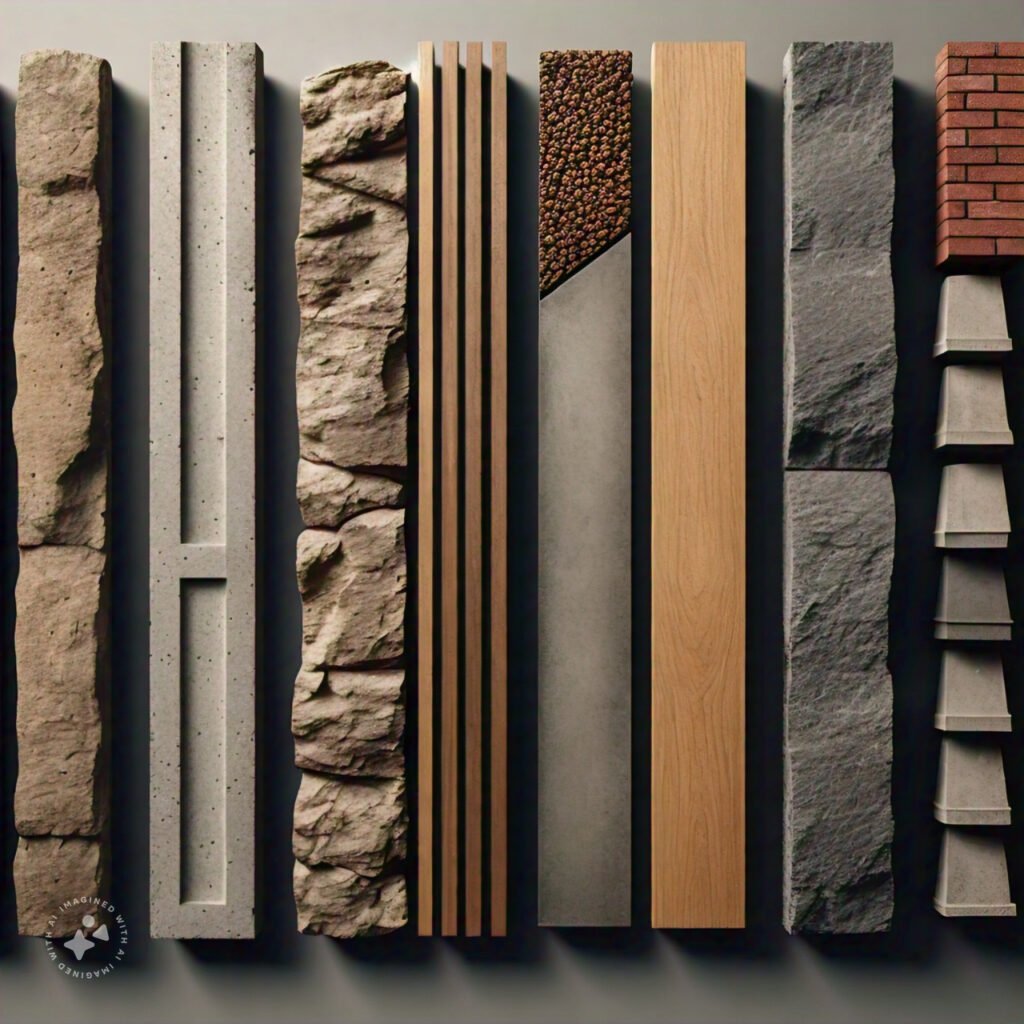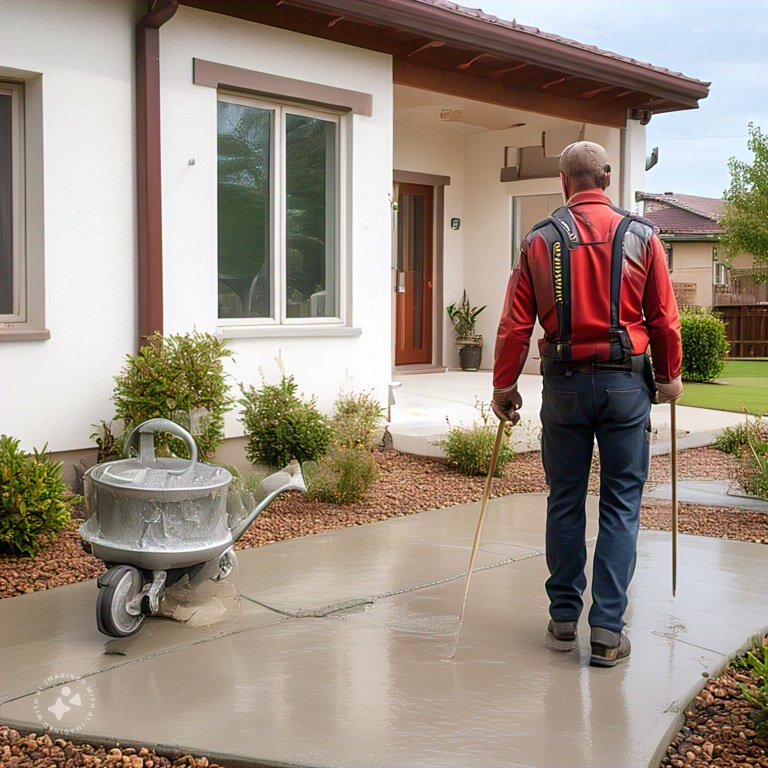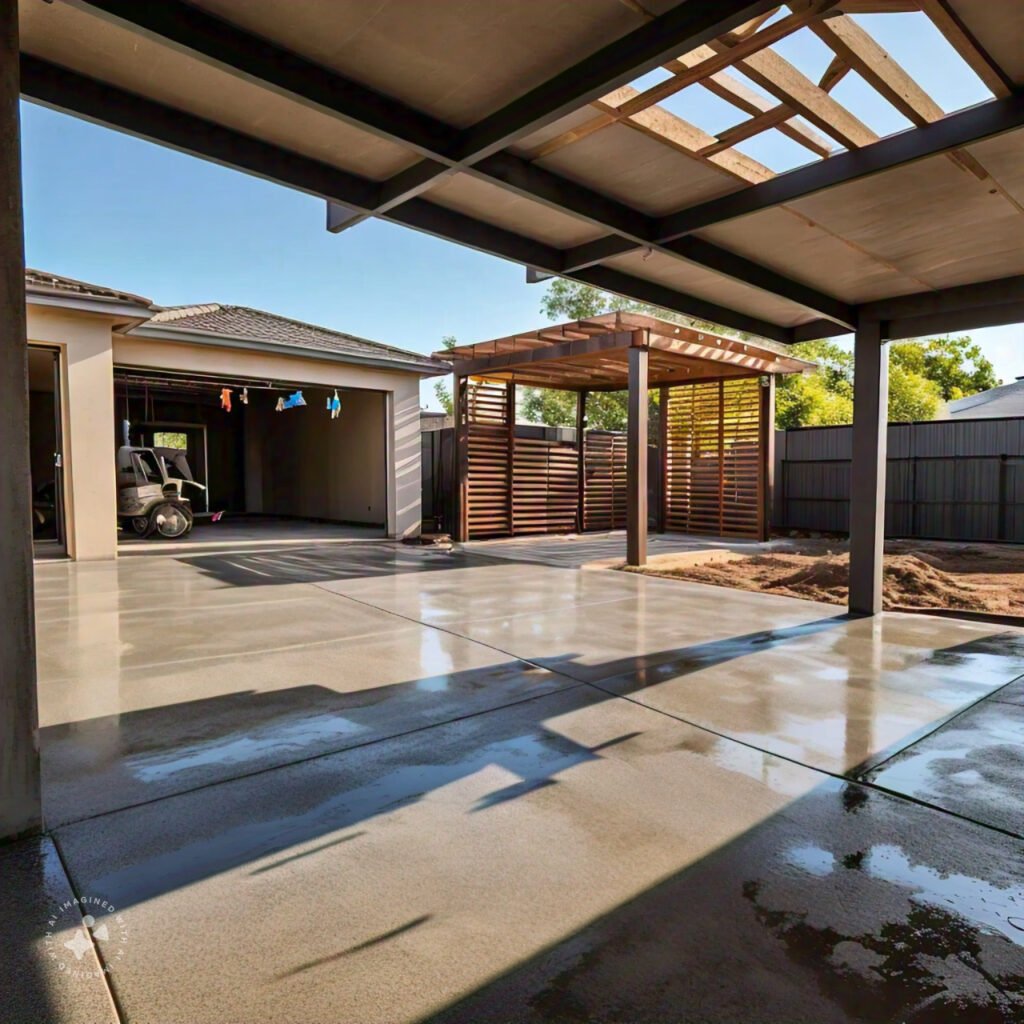Concrete isn’t a new building material, but it has certainly gotten stronger and more versatile over time. A variety of other building materials have been around since ancient times, while concrete-like materials used as early as 6500 BC have been found in Syria and Jordan. The Roman Empire used concrete frequently, but it was nothing like the aggregates of stone, sand, and water used to make Portland Cement that you’ll find in modern concrete driveways.
Building materials have drastically changed over time. Some have evolved from types used for thousands of years, while others are newer and promise to reshape the future of construction. Here we’ll run you through the evolution of different building materials over the years and what we can expect the future to be.
Contents:
- Building Materials in ancient times
- Evolution of Building Materials
- Also, read
- Industrial Revolution
- Future of Building Materials
- Let Us Install and Repair Your Concrete Driveway
Building Materials in ancient times
In Neolithic times, bone, grasses, hide, and animal fibers were used. Natural building materials were dominant. It was common to use mammoth ribs, tree bark, logs, clay, and lime plaster to shape and assemble using simple tools. The first structures were likely similar to huts and tents. As tools and techniques advanced, available materials ranged from what could be found in nature to materials that seem more familiar today.
Stone: Even when a lack of metal tools limited the types of available materials, builders could erect stone structures. Dry stone walls don’t even have mortar to bind the stones together. Still, stones can be used to construct buildings, bridges, and sculptures. Early examples can be found in Scotland and Ireland.
Mud: Mud bricks, first used in the late Neolithic period, were improved by the ancient Egyptians around 3000 BC. Mud was mixed with straw to form an adobe-like material heated into bricks. This process evolved into the use of mortar, which was used over the casing stones of the Great Pyramid of Giza, allowing stonemasons to carve and set them to tight tolerances.
Wood: One of the first building materials, wood remains popular and is a renewable resource. Prehistoric shelters and fortifications often consisted of wood, and wooden logs likely served as the first bridges. Today, lumber is used to frame homes and other structures, and various types of wood are used for interior/exterior building materials and furnishings.
Bronze: During the Bronze Age, bronze and copper were used to make more durable tools. Bronze could be shaped; it could also be recast if damaged. This eventually led to the use of iron, which is similar in hardness. Steel was created by adding carbon to iron—a process that was in place after 300 BC.
Evolution of Building Materials
Building materials have not only evolved with trends but also with demands for durability, size, and control over interior environments. The energy available to support construction has also influenced the kinds of building materials used. Timber and brick have been used throughout many periods.
Timber and brick have been used throughout many periods. Timber roofs were used in Ancient Rome, while ancient Chinese temples were built with wooden timber frames, long before seal coating was used to protect concrete surfaces.
Traditional timber framing became less popular during the Industrial Revolution as steel could be mass-produced. Still, wood has regained popularity as an eco-friendly material with more options for custom machining, integration, styling, and fireproofing.
Mud bricks were used throughout ancient times. Lime mortar was used in Ancient Greece, while stone bricks were used in China (parts of the Great Wall consist of stone bricks). Brick was popular during the Renaissance and increased in production during the eighteenth century. The production process changed a little over time. Although now mass-produced rather than handmade, brick remains a popular architectural material today.
Other building materials that have evolved include:
Glass: Used in everything from windows and home furnishings to the walls of skyscrapers, glass has been manufactured since the seventeenth century. Early forms of glass were available in ancient Egypt, Rome, and during the Middle Ages. Once it could be mass-produced, glass became more commonly used in structures and not just as a luxury.
Insulation: Asbestos was the first form of insulation and was used well into the 20th century. The first modern advance in insulation happened in the 1930s with the accidental invention of fiberglass insulation. It was popular in the 1940s, while cellulose was common from the 1950s to the 1970s. Polyurethane spray foam became popular in-home construction in the 1980s while, today, there are many different types of insulation to choose from.
Flooring: In early history, stone was the dominant building material. It is still used today, as is wood. Older homes often have linoleum or vinyl flooring, although this is widely considered outdated. Vinyl produced decades ago may contain asbestos and dioxins, which are unhealthy. Hardwood flooring is commonplace; bamboo is often used as an alternative to vinyl and is highly durable and sustainable.
Also, read:
- The Role Of Calcium Chloride In Concrete
- Patio Coverings vs. Pergolas
- How concrete flooring can benefit your business
- Why is building concrete driveways the better choice in hot climates
Industrial Revolution
During the Industrial Revolution, new technologies emerged that led to advancements in building materials. The development of machinery and tools for cutting, grinding, boring, and other processes provided more flexibility in building. Steam engines, explosives, and transportation options like canals and railways also expanded building potential.
Once steel could be mass-produced, I-beams and reinforced concrete were possible. This also led to the widespread use of plumbing to provide ordinary homes with fresh water and a systematic means to collect sewage (modern pipes are usually made of corrosion-resistant plastic composites). The creation and refining of building codes have led to improvements in material quality and fire safety.
In the 20th century, heavy equipment, elevators, cranes, and prefabrication expanded construction capabilities and the way various materials could be used. Eventually, the computer-aided design allowed for more precise material development, production, and selection. In the late 20th century, sustainability became a higher priority in the construction industry, with resource conservation, environmental protection, and reduced energy consumption being top goals.
Future of Building Materials
We’re now in an age of computer-enabled smart appliances, lighting, security, and more, but modern building materials are also shaping the home construction industry. Numerous types of materials are in development that will continue to revolutionize construction.
One of these is solar paneling. Increased efficiency and reduced costs have made solar panels more popular. By May 2019, more than two million solar systems had been installed in the United States, according to the Solar Energy Industries Association. They save on energy costs and come with perks such as federal and local tax incentives and the option to sell power back to the grid.
Numerous advanced materials are now raising the potential for changes unlike anything seen in the past. These futuristic developments include:
Self-healing concrete: Bacteria in the mixture produce calcite when exposed to water, which can essentially heal cracks, reducing maintenance and greenhouse gases associated with repair and replacement processes.
Light-generating concrete: Tiny glass balls embedded in the material reflect light to potentially create signage, underground lighting, and warning signs. It is non-flammable and may have artistic uses as well.
3D Graphene: A carbon that is 3D-printed and 200 times stronger than steel, despite being just 5% as dense, it has potential uses in vehicles and supertall skyscrapers.
Laminated timber: This is water-resistant, high-strength prefabricated timber that is strong enough for building skyscrapers, while significantly reducing carbon emissions.
Modular bamboo: Fast-growing and low-cost, modular bamboo can be made into different shapes. It is earthquake-resistant and can be reinforced with steel bars.
Transparent Aluminum: This is a corrosion-resistant ceramic alloy that can resist radiation and oxidation, with potential uses for windows and marine and space vehicle domes.
Translucent wood: Stripped of color, this wood offers good insulating properties and strength. It may be a viable replacement for window glass and could be used as solar panel cells.
Wool brick: Stronger than conventional brick, this material is fused with wool and seaweed polymer, reducing greenhouse gases. It also resists cold-air intrusion.
These materials and others promise to make buildings stronger, safer, and more efficient than ever before. Building materials continue to evolve and take on new forms. Yet one thing’s for sure: Concrete isn’t going out of style. Concrete driveways, patios, and sidewalks must be maintained, and Cross Construction Services is here to help.
Let Us Install and Repair Your Concrete Driveway
Our concrete professionals can install, maintain, and replace your concrete driveway or patio, as well as provide complete design/build services.
If you have a concrete driveway in Houston, we can install 3,000 psi concrete, apply polyurethane sealants or polymer-based cement resurfaces, and fix stained, cracked, or crumbled concrete. We provide service to residential and commercial customers via six locations in the Houston area. To learn more or receive a free estimate, call 713-254-1703.
Sources:
https://www.nachi.org/history-of-concrete.htm
https://www.seia.org/news/united-states-surpasses-2-million-solar-installations


